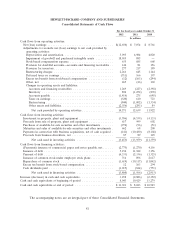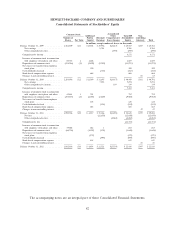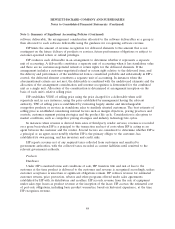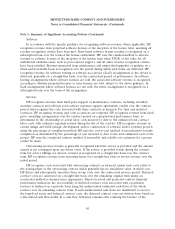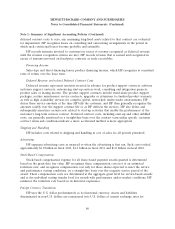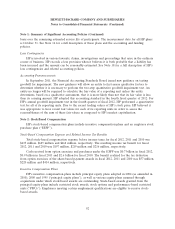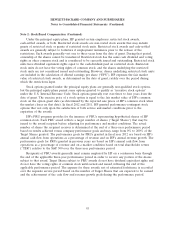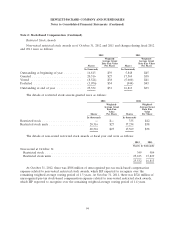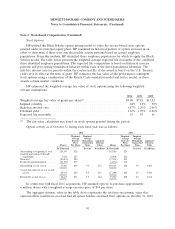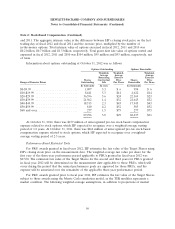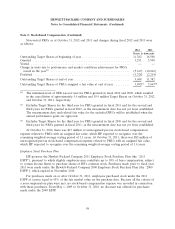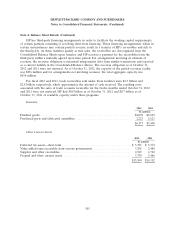HP 2012 Annual Report Download - page 99
Download and view the complete annual report
Please find page 99 of the 2012 HP annual report below. You can navigate through the pages in the report by either clicking on the pages listed below, or by using the keyword search tool below to find specific information within the annual report.HEWLETT-PACKARD COMPANY AND SUBSIDIARIES
Notes to Consolidated Financial Statements (Continued)
Note 1: Summary of Significant Accounting Policies (Continued)
the legacy HP software business. The webOS business is also a separate reporting unit within the
Corporate Investments segment.
HP estimates the fair value of indefinite-lived purchased intangible assets using an income
approach. HP recognizes an impairment loss when the estimated fair value of the indefinite-lived
purchased intangible assets is less than the carrying value.
HP reviews purchased intangible assets with finite lives for impairment whenever events or changes
in circumstances indicate the carrying value of an asset may not be recoverable. Recoverability of these
intangible assets is assessed based on the undiscounted future cash flows expected to result from the
use of the asset. If the undiscounted future cash flows are less than the carrying value, the purchased
intangible assets with finite lives are considered to be impaired. The amount of the impairment loss, if
any, is measured as the difference between the carrying amount of these assets and the fair value based
on a discounted cash flow approach or, when available and appropriate, to comparable market values.
HP amortizes purchased intangible assets with finite lives using the straight-line method over the
estimated economic lives of the assets, ranging from one to ten years.
Long-Lived Asset Impairment
HP evaluates long-lived assets for impairment whenever events or changes in circumstances
indicate the carrying value of an asset may not be recoverable. HP assesses the recoverability of the
assets based on the undiscounted future cash flow and recognizes an impairment loss when the
estimated undiscounted future cash flow expected to result from the use of the asset plus the net
proceeds expected from disposition of the asset, if any, are less than the carrying value of the asset.
When HP identifies an impairment, HP reduces the carrying amount of the asset to its estimated fair
value based on a discounted cash flow approach or, when available and appropriate, to comparable
market values.
Fair Value of Financial Instruments
HP measures certain financial assets and liabilities at fair value based on the exchange price that
would be received for an asset or paid to transfer a liability (an exit price) in the principal or most
advantageous market for the asset or liability in an orderly transaction between market participants.
Financial instruments are primarily comprised of time deposits, money market funds, corporate and
other debt securities, equity securities and other investments in common stock and common stock
equivalents and derivatives. See Note 9 for a further discussion on fair value of financial instruments.
Derivative Financial Instruments
HP uses derivative financial instruments, primarily forwards, swaps, and options, to hedge certain
foreign currency and interest rate exposures. HP also may use other derivative instruments not
designated as hedges, such as forwards used to hedge foreign currency balance sheet exposures. HP
does not use derivative financial instruments for speculative purposes. See Note 10 for a full
description of HP’s derivative financial instrument activities and related accounting policies.
Retirement and Post-Retirement Plans
HP has various defined benefit, other contributory and noncontributory retirement and
post-retirement plans. HP generally amortizes unrecognized actuarial gains and losses on a straight-line
91


